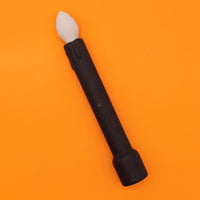Both oysters and chocolate contain enriching vitamins that may help your reproductive system more holistically.Bottom line, neither food is likely to induce spontaneous horniness, but both oysters and chocolate do contain enriching vitamins that may help your reproductive system more holistically. More importantly, they’re delicious, and there’s certainly no harm in enjoying them with your partner. For instance, oysters’ silky, gelatinous texture lends sensuality to the experience of eating them with a lover. And having a positive, sexy experience that involves food is more likely to condition you to respond to them with arousal in the future. But instead of relying on these foods to do the heavy lifting, bring them in as sideshows to the main event. “The real aphrodisiac is spending time with each other, cooking with each other, and being a team,” says Stubbs. “That’s where real oxytocin-boosting takes place.” Stubbs has her own theory about why chocolate is one of the top picks, and it has nothing to do with ingredients: “It’s luxurious, dark, sweet, and can be added into sex play.” She suggests drizzling chocolate syrup on erogenous zones of your partner’s upper body (neck, chest) and licking it off. Avoid using it on or around the vulva, or on any body parts that may end up inside the vagina (fingers or a penis), as sugar interacts badly with vaginal pH levels and can lead to a yeast infection. If you do integrate chocolate into your romantic date, Stubbs recommends hot chili chocolate in particular. Hot chilis induce a flushed, overheated feeling, mimicking some of the physiological responses of arousal. But is replication the same as causation? Actually, yes, sort of. Chilis contain a colorless, odorless, oily compound called capsaicin that stimulates the nerve endings on the tongue. It creates a tingling sensation and increases the release of adrenaline and endorphins, which are natural opiates for the human body—both are released during good foreplay or sex.
Other foods may be likely to increase arousal only because they’re…well, all-around good for your system.Maybe you’re reaching for aphrodisiacs because you’re struggling with low sex drive in general. In that case, you’re gonna need more than sexy foods. A healthy libido “relies on so many different internal and external systems,” says Stubbs. “A whole symphony of things that have to be working together.” She recommends going back to the hallmarks of foundational nutrition by asking yourself a series of questions: Are you hydrated? Are you hitting the right daily intake of fruits and vegetables? Are you getting sleep? What are your stress and exercise levels? Even if you’re desperate, Stubbs advises against anything that advertises itself as a quick fix: “No powdered rhino horn, no Spanish Fly, nothing they’d sell at a gas station in little pill packets.” That said, some good news: There are some (slightly) more proven sex superfoods, though none are the mythical panty-droppers that you’d expect of aphrodisiacs. Topping the list is maca, a sweet root vegetable that’s been referred to as "Peruvian Viagra." Four legitimate studies have shown that participants experienced enhanced sexual desire after they consumed maca. There is also a small amount of conclusive evidence for certain aphrodisiac supplements that hail from the East, like fenugreek, gingko, and red ginseng. In one study in rabbits, administration of ginseng enhanced the release of nitric oxide in the corpus cavernosum, a process that plays a key role in erections. And other foods may be likely to increase arousal only because they’re…well, all-around good for your system. Nuts contain the amino acid L-arginine, which gets converted to nitric oxide in the body (see the ginseng example above). In one small study, men who consumed 3.5 ounces of pistachio nuts per day for three weeks experienced firmer erections. Ultimately, though, unless you’re deficient in any of the nutrients being provided by these foods, it’s not necessarily their biological properties, but our subjective experiences with them—their properties, their textures, the general sense of decadence we associate with both oysters and chocolate—that’s more likely to turn us on. Basically, it’s more psychological than biological. But don’t discount the placebo effect, advises Stubbs: “The mind is powerful. If you think it’s helping your body, it may be helping your body.”




















































